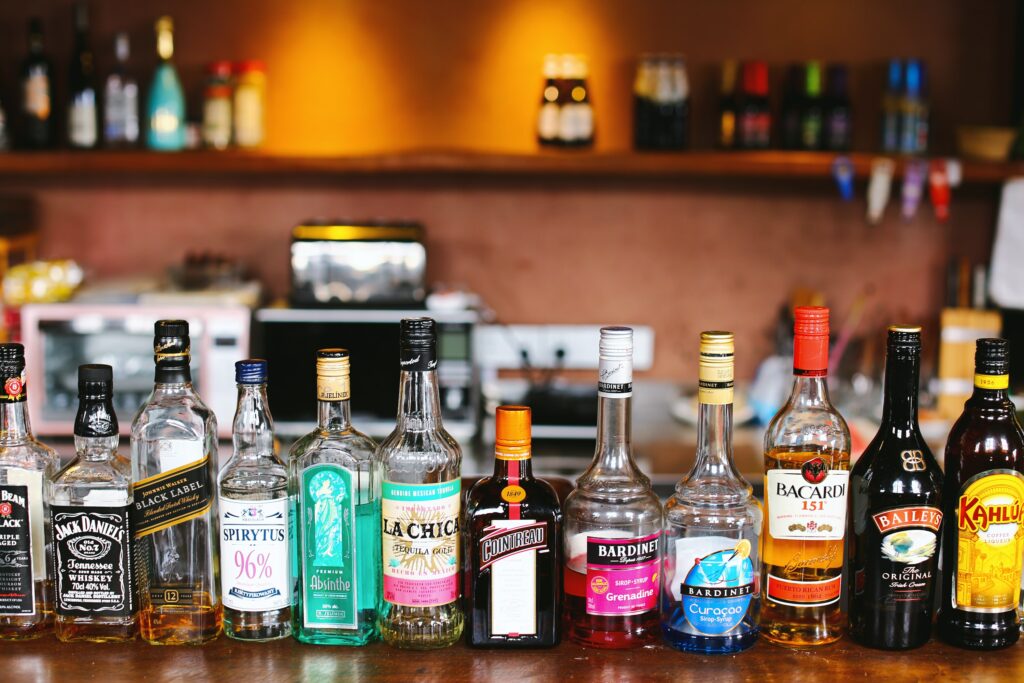It’s time for you to take your cocktail game to the next level. With so many types of liqueurs, it can be hard to know where to start. This blog post will help you figure out which type of liqueur is best for each drink based on the flavor that you want your cocktail to have!
What’s the Difference Between Liquor and Liqueur?
The ingredients in your favorite beverages are actually quite similar. They both have a liquor base, after all. A liqueur is simply sugary liquor, often flavored with an oil or flavoring substance.
For this reason, you can discover any flavor of liqueur imaginable, from the enticing-sounding choices such as orange or elder flower to the not-so-attractive-sounding options like artichoke. Artichoke isn’t being shunned; it’s just that drinking them doesn’t sound appealing.
What Are the Best Liqueurs to Buy?
It’s difficult to characterize certain liqueurs as must-haves because, well, each one has a distinct flavor profile.
Some people prefer one type of alcoholic beverage to another, which implies they’ll pick the Cynars, Aperols, and Chartreuses of the world over less daring options.
However, we believe there are a few bottles you should have on hand at all times. This is because they’re the most common when mixing drinks. And it’s usually always a good idea to consume an Irish Coffee.
Cinzano Rosso Sweet Vermouth
When it comes to creating a lot of classic drinks (including Manhattans and Negronis), you’ll need sweet vermouth.
Vermouth is made by mixing red wine with herbs and spices, making it suitable to drink on its own but wonderful in a Manhattan (such as a rye whiskey) with strong liquor. But don’t forget that this vermouth is sweet. In fact, it may be too sugary for some people to consume alone.
Dry vermouth, on the other hand, is another variety of vermouth. Dry vermouth is commonly used in a Martini cocktail and are thus suggested if you want to pretend to be James Bond. Both are excellent alternatives to have on hand. But we’re devoted to a fantastic Manhattan, so we’ll stay with sweet.
Cinzano’s sweet vermouth is made in Italy and contains its own unique recipe. On the alcohol front, it has a 15% ABV, which is just sufficient for an after-dinner swig or a nice addition to your drink.
Fernet-Branca
If you want to keep the world’s greatest liqueurs at home, you’ll need a bottle of Fernet-Branca.
Fernet-Branca is an Italian liqueur that has earned a reputation as “the bartender’s handshake.” Mixologists and bartenders appreciate ordering Fernet-Branca to demonstrate their credentials.
It’s not only an experts favorite; it’s also an exceptional liqueur. According to Drizly, this spirit has a “balanced, harsh, bold, cinnamon, citrusy, curranty, dark fruity, dried fruity, earthy bouquet with a note of mint and pine.”
This is certainly not flavor overload, as we mentioned. While this spirit does have a strong flavor, it has a full finish that grows on you with time. This legendary liqueur is technically an amaro because it is made from a combination of 27 various herbs and botanicals based on an uncommon family recipe that only one individual knows.
Disaronno Originale Amaretto
That’s right, it’s another Italian liqueur. Disaronno is yet another classic that many people would consider a must-have liqueur. The Disaronno almond liqueur is delicious on its own, and it’s fantastic in cocktails. And, if you’re still in college (or act like it), you can’t have a Flaming Doctor Pepper without Disaronno.
The Disaronno original recipe dates back to the 16th century, according to the manufacturer. Because of this Italian import’s popularity, stocking up on it isn’t difficult. We also strongly recommend drinking it straight if you haven’t already. It has a more potent flavor than many liqueurs but no need for a complement.
Baileys Irish Cream Original
Baileys is a well-known Irish liqueur that has a wonderful flavor in almost every way, form, and shape. It’s an extremely sweet, chocolaty cocktail that acts as a cozy blanket around your heart when served straight. Add it to your coffee and watch as that warm, fuzzy feeling transforms into an uncontrollable urge to be mischievous. Or perhaps that’s just us.
However, if you drink this delectable combination of Irish whiskey, cream, and chocolate, it will undoubtedly bring a smile to your face whatever the season. If we’re being honest, Baileys tastes best on a cold, winter morning. Although Baileys Irish Cream has a mere 17% ABV, it’ll sneak up on you after a few Irish Coffees.
Cointreau
Cointreau is an orange-flavored liqueur that’s familiar to all of us who have ever had a Margarita (and most of us have). Cointreau is a commonly used ingredient in many Margarita recipes. Some people may instead choose to use Triple Sec, another orange-flavored liqueur, in their Margaritas, but the results are essentially the same: delicious Margaritas.
Cointreau is a French liqueur that adds just the right amount of zest to any cocktail with its somewhat bitter flavor profile derived from oranges and orange peels. But, don’t go overboard with it. Cointreau is a liqueur, yet it has the kick of a spirit, knocking you flat after only a few sips due to its 40% ABV. If you enjoy Margaritas, this is one to have on hand.
Kahlua
Kahlua is a coffee liquor that has become insanely popular due to a certain movie with a certain guy who enjoys White Russian cocktails. We don’t have to get into it because you’re already aware of what we’re talking about. That’s the case, but here are some facts you may not have known: Kahlua is produced in Mexico; rum is the base for Kahlua, and the liqueur has been around since 1936.
Kahlua, needless to say, is a fantastic liqueur to have on hand. If you want a little kick in your coffee that’s unique from your Baileys-drinking buddies in Ireland, give this one a try. The rich, smooth taste of the espresso compliments this salt-rimmed glass cup, while the substantial 21% ABV will ensure that any day begins on the right foot.
Chartreuse Green Liqueur
Looking for something more entertaining? Try some Chartreuse. Chartreuse Green is one of those exciting things in life that must be experienced to be appreciated, as it’s the only alcoholic beverage with a natural green color (according to Chartreuse). Take that, absinthe. Chartreuse explains that just two monks are aware of the 130 plants and herbs used to make this liqueur, adding to the strangeness of the product. With plenty of fire, it has a refreshing and flowery taste with 55% ABV.
To us, if you’re going to spend money on the expensive green, drinks should be served on the rocks. If you want to know why everyone’s talking about it.
St-Germain Elderflower Liqueur
If you’re searching for a new flavor to add to your cocktail recipes, try St-Germain’s Elderflower Liqueur.
Aside from the crisp pear and juicy peach notes, what makes St-Germain so unique is its scarcity. St-Germain only collects the elderflowers when they are at their ripest, which gives the brand a three-week window for picking. This lends each bottle an interesting and unique quality since it has the option to be slightly different.
While we suggest trying it after an afternoon meal on a hot summer day, don’t miss out on the cocktails. St-Germain can enhance and add freshness to your favorite drink, especially when used with your preferred gin vodka cocktail.
Understanding liqueurs
In this blog post, we explored the different types of liqueurs and their flavors. We looked at the most common types of liqueurs used for cocktails and what flavors they are. We also looked at some of the more popular liqueurs and discussed their flavors and how to best use them in cocktails. So what’s first on your shopping list?
Disclaimer
We hope you enjoyed reading our article, however we do suggest you read our disclaimer. All the material written in this report is provided for informational purposes only and is general in nature.
Every person is a unique individual and what has worked for some or even many may not work for you. Any information perceived as advice by must be considered in light of your own particular set of circumstances.
Please drink responsibly!
The author or person sharing this information does not assume any responsibility for the accuracy or outcome of your use of the content.

